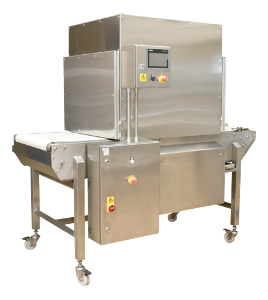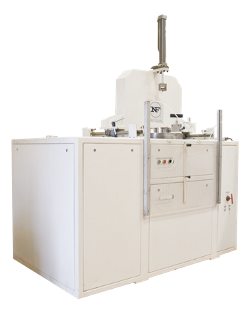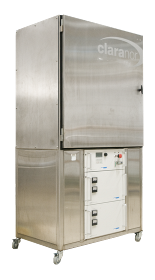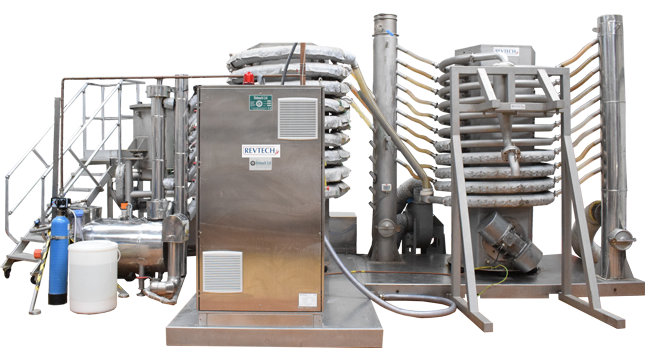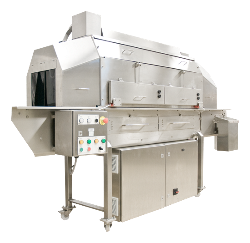Cold plasma is not yet used in the food industry to any significant degree, but it offers potential applications that could have significant benefits. The most noticeable is the disinfection of equipment surfaces, packaging, food contact surfaces or even food itself.
Plasma is generated on the surface of the electrode panels using the surrounding air and is an indirect treatement. Electrode panels cover a treatment area ~0.45m² and can be adjusted up to 30cm from the conveyor belt to allow the treatment of a variety of different sized food products as well as the conveyor material.
Resources:
New technologies bulletin
Cold plasma at Campden BRI
The, essentially, non-thermal nature of high-pressure pasteurisation makes it an excellent process for preserving the ‘fresh-like’ characteristics of foods.
We have an EPSI high pressure processing vessel, 70mm in diameter and 200mm in length with a maximum working pressure of 700MPa (7000 bar) and a maximum operating temperature of 90°C. The pack temperature during processing can be recorded.
Resources:
New technologies bulletin
High pressure processing at Campden BRI
Power ultrasound has numerous non-preservation applications such as cutting, cleaning, emulsifying, de-gassing and foam breaking.
We have a 2 kilowatt ultrasonic processor from Cavitus for industrial applications with continuous and batch mode options. The system is fully PC controllabla and is an ideal research tool for the investigation of techniques such as ultrasonic cell disruption, emulsification and homogenisation.
Resources:
New technologies bulletin
Power ultrasound at Campden BRI
This equipment could be used for the decontamination of packaging surfaces and of transmissive materials such as water. Applications for food are likely to include surface treatment of relatively short shelf-life products that are susceptible to mould growth such as baked goods. A relatively modest reduction in microbial numbers could offer a significant shelf-life extension for very short-shelf life products.
We have a 4 lamp pulsed light system supplied by Claranor (France). Suitable for proof of principle studies for the inactivation of micro-organisms on food and food-contact surfaces.
Resources:
New technologies bulletin
Intensity pulsed light
treatment at Campden BRI
A continuous flow system for pasteurisation, roasting, controlled heating and wetting of low water activity products. This equipment can be used for the pasteurisation and/or roasting of dry products such as herbs, spices, nuts, seeds, grains, dried fruits and vegetables, cereal mixes and animal feed.
We have a Revtech unit onsite for the continuous heat treatment of herbs, spices, nuts, seeds and other dry ingredients. The system incorporates electrical heating with optional heated steam followed by a drying step to remove moisture before packing.
Resources:
New technologies bulletin
Dry
pasteurisation at Campden BRI
UV light treatment is a non-thermal, non-chemical technology to inactivate microorganisms, and has been used to disinfect water/air systems and for surface decontamination (packaging and work surfaces) for many years. Its application to process foods, is a relatively new and challenging area.
Treatment with ultraviolet energy offers several advantages to food processors as it does not leave a residue, and does not require extensive safety equipment. It is also easy to use and is relatively low on equipment, energy and maintenance costs.
Our system consists of 16 x 95W high output UV-C emitters, where the product can be treated from both above and below.
Resources:
New technologies bulletin
Decontamination using the UV
Tunnel system


